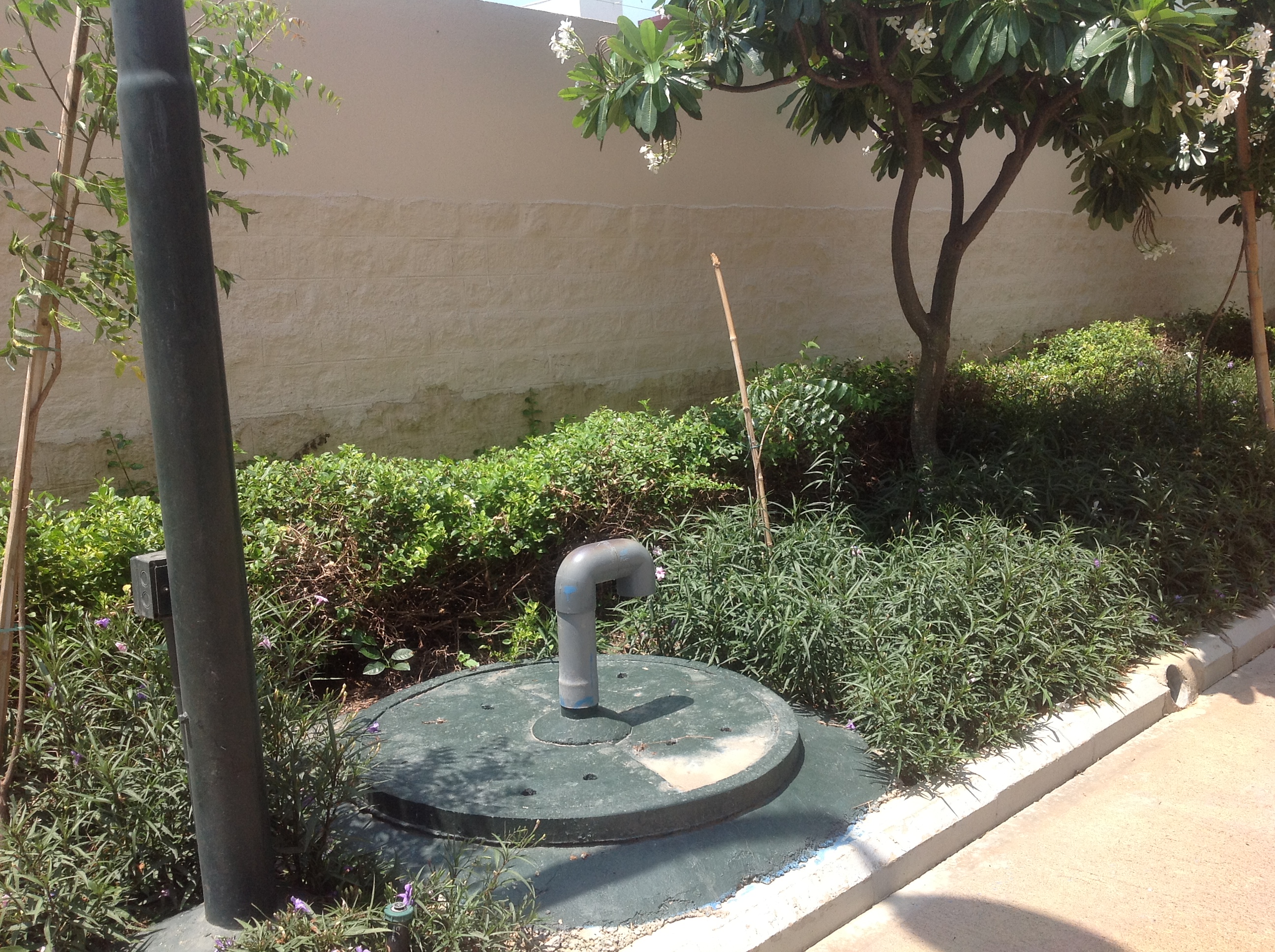Water Woes Dispelled With Rainwater Harvest

Fresh water sources are drying up in Bangalore as our requirements outstrip our availability. Going along with Michael Baptiste and Vijayraj to the Sarjapur Industrial Area, the positive steps which are being taken by big companies regarding Rain Water Harvesting was an eye opener. Sarjapur is reeling under a lack of fresh water sources as the bore wells too have dried up. Obviously this means the groundwater table has been over exploited and so harvesting the rain is the only way forward which the industries realise and have begun to implement.
Our first stop was at Smith Kline and French factory premises in Sarjapur. It was an eye-opener to see that every single one of the factory building is now connected by a series of collection pipes. These pipes collect all the rainwater which falls on the roof and channelises it towards massive storage tanks after being filtered through the water filter made by Farmland Rainwater Harvesting Systems ( FRHS).
Farmland Rainwater Harvesting Systems have innovative, dual density filters which are unlike the conventional filters I have seen. The Dual Intensity Filter works on the principal of cohesive and centrifugal force. I saw them in action and realise that the open ended design works on gravitational force with no external energy required. There is an automatic flush-out of particles of debris that might come in off the roof in the water.
Other filters have a gate valve on the side and the only way the debris can be cleaned is by manually opening the valve and periodically cleaning it, explains Vijayraj while showing me the working of the FRHS filter . With decay of the debris there is a definite chance of contamination of water and if the debris is not cleaned there could be an overflow of water
The filter made by FRHS can be used in four different ways he explains:
1) The filtered water is collected in a sump which is built underground. and can be used in the house or garden area
2) Recharging of the bore-well by connecting the filtered rain water directly to the casing pipe of the bore. This can be done if the roof area is less than 100 sq mts.
3) If the rooftop area is more than 100 sq mts, FRHS has 'V' wire technology where the water is recharged by an injection well directly into the ground water table.
4) The recharge of an open well is done with the rain water that is filtered and harvested. Here all the water can be channeled to go in. Open wells dry when the ground water table is emptied. By recharging these wells, the ground water table is also recharged.
We walked around SKF and noticed that every single roof has been connected by pipes and after filteration the water was collected in massive sumps, to be used in the premises. Infact even the water that fell in the rest of the property, was channelised towards an area where it could percolate into the ground.
In the Infosys property, that is where we got to see the Injection wells. Here the rainwater was channelised into a silt trap, as the water came from across the property and containd everything from leaves to sand. Once the water overflows in the silt trap, it then flows into the well, which has a V wire filter, and the water passes through multi layers of filteration. This includes 150mm gravel, coarse sand, 100mm of crushed stone, 100 mm of charcoal, and 50 mm of crushed stone.
" Considering an average rainfall spread of 70 days per year, the approximate quantum of water percolating through this Injection Well is 2.1 million litres per Injection well," explains Vijayraj.
Both Michael Baptiste and Vijayraj are committed towards their goal of spreading the idea of rainwater harvesting and have been awarded several meritorious prizes for their work. They have won the 'Innovation for Climate Protection' Award from the Times of India, 'Most innovative Water Saving Product from the CII and the 'Green Champion Award' from the Green Building Council.
At the Bangalore TESCO Nick Williams says," We believe our planet’s future is a collective responsibility, reflected in our sustainable and consistent efforts to be environmentally friendly. We have taken up a significant number of initiatives to reduce our carbon footprint. The introduction of aerators in taps has saved nearly 73, 00,000 litres of water annually. Meanwhile, rainwater harvesting has significantly reduced our dependence on groundwater. Our 15-acre campus has two underground storage tanks of 200 kilolitres capacity each."
These tanks says Nick, collect surface runoff as well as rooftop water. In a city like Bangalore with worsening water table levels, all this is reducing freshwater consumption to a great extent and helping replenish the water table.”



